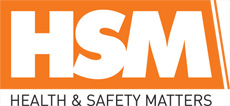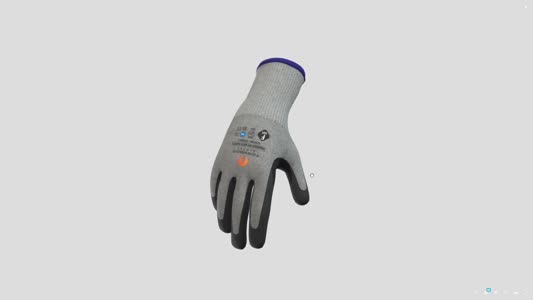
 |
Mark Sennett
Managing Editor |
 |
Kelly Rose
Editor |
| Home> | Industry Update | >Company News | >Protecting lone workers in a warming world |
| Home> | Managing Health & Safety | >Environmental Monitoring | >Protecting lone workers in a warming world |
Protecting lone workers in a warming world
08 July 2025
SAM TOWENS discusses the steps that employers should be taking to protect workers - especially those working alone - with rising heatwaves expected across the globe.

According to the Health and Safety at Work Act 1974, employers have a general duty to ensure the health, safety and welfare of their workers. When carrying out this duty, are enough companies considering the danger of extreme heat?
There’s an 80% chance that the world will experience the warmest year on record over the next half-decade. With around 4 billion people already experiencing thirty extra days of extreme heat over the last annum, made twice as probable by the warming planet, action to protect the population must be taken now.
For business leaders, the risk to employees must not be downplayed. The story of David Azevedo, a construction worker who died from a ‘cardiac arrest caused by severe hyperthermia’ in 2022, is a stark reminder of the danger. By introducing proactive measures, including training on the symptoms of heatstroke and changes to working hours, deaths like David’s can be prevented. When lives are at risk, it's just not enough to do the bare minimum.
Heat-related illnesses, such as heatstroke, dehydration, and heat exhaustion are the most immediate risks. For lone and remote workers, who may not have immediate access to medical assistance, the stakes are even higher.
Lone workers: An at-risk group
Lone workers, those who work by themselves without close or direct supervision, are particularly vulnerable to rising temperatures. Without colleagues nearby, they are more vulnerable to the effects of extreme weather, and any delay in identifying or responding to heat-related symptoms can lead to severe outcomes. Concerningly, our latest ‘Lone Worker Landscape Report’, revealed that fewer than 30% of lone workers feel adequately protected or included in risk assessments. This highlights a significant gap in workplace safety, with many workers being left unaccounted for in emergency planning. For businesses, this means a lack of visibility and limited ability to ensure the safety of workers in high-risk environments.
By fostering a company-wide safety culture focused on the visibility of all workers, employers can take proactive measures to protect their most vulnerable groups, especially lone workers. While not a ‘silver bullet,’ adopting the right solutions is an impactful first step.
Technology as a safety enabler
As the risks of heatwaves and extreme weather grow, technology plays an important role in protecting workers, particularly lone and remote workers. By leveraging technology, businesses can enhance risk assessments and create more effective safety strategies.
- Supporting risk assessments for lone workers
Risk assessments are crucial for identifying hazards, particularly for lone workers in extreme conditions. Technology doesn’t replace the need for staff-led assessments, but it makes the process more efficient. For example, companies can use digital tools to streamline risk assessment workflows and make it easier to identify the specific conditions lone workers face. This could include ensuring that risk assessments account for factors like access to Wi-Fi, temperature extremes, or the presence of dangerous terrains. Technology enables businesses to quickly adapt their safety protocols based on the unique risks of each worker's environment, allowing them to take more targeted, proactive steps to mitigate those risks. - Enhancing communication for lone workers
Lone workers often operate in remote areas where reliable communication is crucial. Some lone worker apps are designed to function even in areas with limited mobile data coverage by automatically switching to SMS when a data connection is unavailable, ensuring alerts and check-ins still get through. In extremely remote areas with no mobile signal at all, these apps can integrate with satellite connectivity via dedicated devices, allowing uninterrupted communication. This means employees can continue using the app without disruption, maintaining contact with supervisors and emergency services. The technology also facilitates scheduled check-ins and can trigger alerts if a worker misses one, providing an essential layer of protection in hazardous or isolated conditions. - Fall and panic detection
For lone workers, quickly detecting falls, lack of movement, or signs of distress is critical. Lone worker safety apps equipped with features like fall detection, non-movement monitoring, and panic alerts ensure that supervisors are instantly notified if a worker is injured, incapacitated, or unresponsive. These alerts significantly reduce response times, helping to minimise harm and improve outcomes. In addition, many lone worker apps integrate with mobile communication systems, allowing workers to signal for help at any time—providing an added layer of safety and peace of mind. - Digital training & learning for heatwave safety
Digital safety training is a vital tool for educating lone workers on managing their health during extreme heat. Training programs can teach workers how to recognise signs of heatstroke, manage hydration, and adjust work routines to prevent overheating. With digital platforms, businesses ensure workers have immediate access to safety information and can regularly update their knowledge to stay safe in challenging environments.
Resilience amid chaos
As heatwaves become more frequent, employers must take proactive steps to protect workers and ensure long-term business resilience. With 50% of businesses affected by extreme weather events in the past few years, companies must act now to mitigate risks and prepare for worst-case scenarios. In the long term, this approach brings value by minimising losses and reducing operational expenses after a disaster, with potential savings of up to five times the amount invested.
Sam Towens is product marketing manager at EcoOnline, To find out more about crisis preparedness in a warming world, you can read insights from EcoOnline’s latest The Situation Room article or register here to join the live debate on 30 July 2025.
- Rent or buy?
- Time to beat burnout
- A greener future
- Five simple solutions for site safety
- Avoidable cases of negligence that caused harm
- Safer delivery equals a safe workplace
- Protection from a distance
- Top tips for driving in the dark
- Don’t turn a blind eye to safety
- The differences between low and high concentrations of H2S gas























